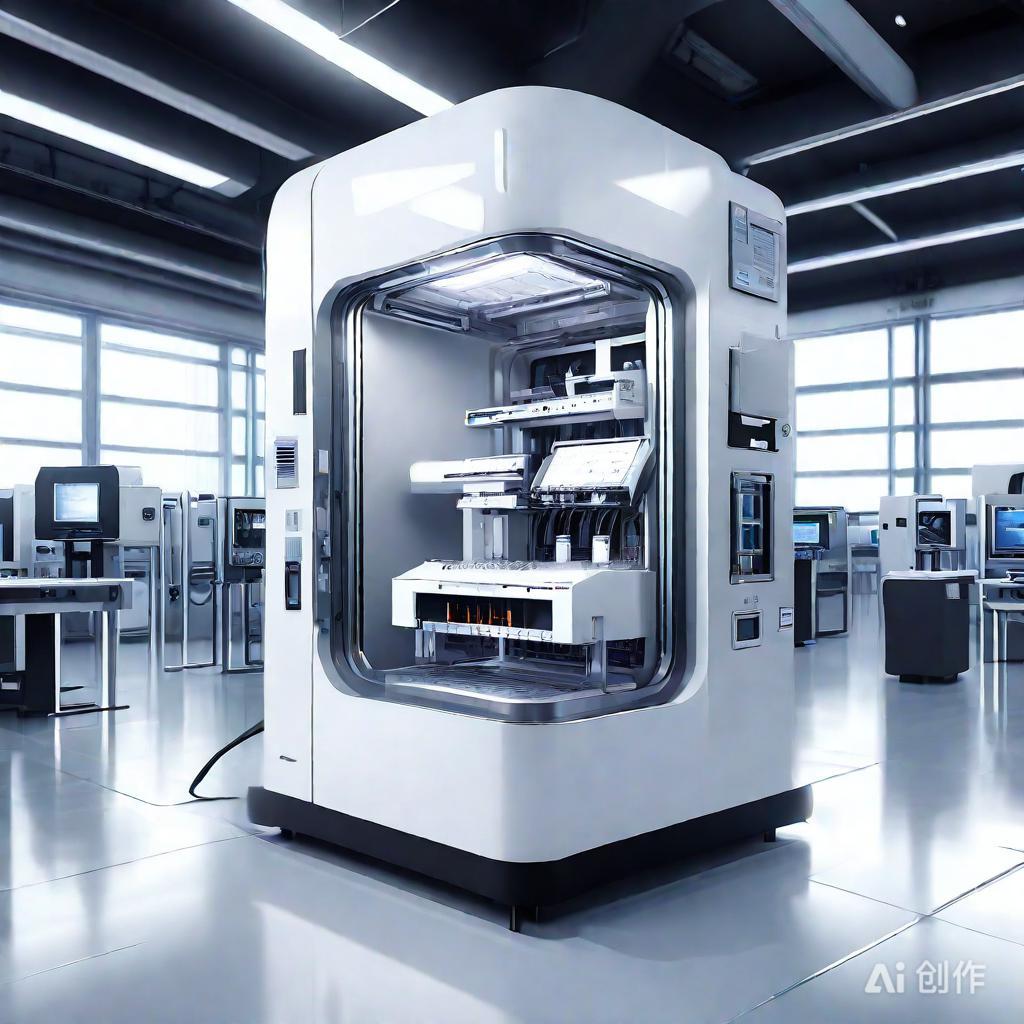I. Integration of Intelligence and Digitalization
Intelligent Production: Leveraging artificial intelligence and machine learning technologies, non-standard automation equipment will possess the capabilities of self-adaptation, self-learning, and autonomous decision-making. For instance, the combination of intelligent sensors and AI algorithms enables equipment to monitor production parameters in real-time and adjust automatically, reducing human intervention and enhancing production efficiency and product quality.
Digital Management: Utilizing the Internet of Things (IoT) technology, non-standard automation equipment can achieve interconnectivity between devices and systems, forming an intelligent production network. Through big data analysis and predictive maintenance, enterprises can detect potential issues in advance and resolve them, improving the utilization rate and production efficiency of equipment.
II. Modular Design and Flexible Production
Modular Design: Modular design will grant non-standard automation equipment higher flexibility and scalability. Enterprises can quickly adjust and configure production lines according to production needs, reducing the customization cost and development cycle of equipment, and improving market response speed.
Flexible Production: In the future, non-standard automation equipment will be more characterized by flexible production, capable of adapting to different processes and production requirements, and quickly adjusting to changes in production lines. This will enhance the flexibility and adaptability of production lines, meeting the market's diverse and personalized demands.
III. Environmental Protection, Energy Conservation, and Sustainable Development
With the increasing global environmental awareness, the development of non-standard automation equipment will also focus more on environmental protection and energy conservation. Enterprises will adopt more efficient energy utilization technologies and environmentally friendly materials to reduce energy consumption and waste emissions in the production process, achieving green manufacturing and sustainable development.

IV. Expansion of Industry Application Fields
Deepening in Traditional Fields: In traditional application fields such as automotive, electronics, medical, food, and aerospace, as these industries make technological progress and increase production demands, the demand for non-standard automation equipment will continue to grow. For example, in the electronics industry, with the rapid development of 5G and artificial intelligence technologies, the demand for electronic components will keep increasing, and the application of non-standard automation equipment in the electronics industry will become even more extensive.
Expansion into Emerging Fields: With the rise of emerging industries such as new energy, new materials, and biomedicine, the application of non-standard automation equipment in these fields will also continue to expand. These emerging industries have higher requirements for production efficiency, product quality, and process precision, presenting new market opportunities for the non-standard automation industry.
V. Industry Concentration Increase and Enterprise Competitiveness Enhancement
Accelerated Industry Integration: At present, there are numerous enterprises in the non-standard automation industry, but most are relatively small in scale, and the industry concentration is low. In the future, with the intensification of market competition and the gradual improvement of industry standards, industry integration will accelerate. Some enterprises with strong technical capabilities and large market shares will expand their scale through mergers and acquisitions, thereby increasing industry concentration.
Enhanced Enterprise Competitiveness: In order to stand out in the fierce market competition, non-standard automation enterprises will continuously increase R&D investment to enhance their technological innovation capabilities and improve product quality and service levels. At the same time, enterprises will strengthen cooperation with universities and research institutions, introduce high-quality technical talents, and enhance their core competitiveness.

VI. International Development and Global Market Expansion
International Market Opportunities: With the advancement of global economic integration, the demand for non-standard automation equipment in the international market is also growing. Domestic non-standard automation enterprises, with their cost advantages and technological progress, have the potential to capture a larger share of the international market. Especially in some developing countries, the demand for the automation transformation of manufacturing is strong, providing a vast market space for domestic enterprises.
International Cooperation and Exchange: In the future, non-standard automation enterprises will strengthen cooperation and exchange with international peers, introduce advanced foreign technologies and management experience, and improve their level of internationalization. At the same time, enterprises will actively participate in the formulation of international standards, enhancing their discourse power and influence in the international market.
VII. Policy Support and Market Environment Optimization
Policy Support: The state will continue to introduce a series of policy measures to support the development of the non-standard automation industry. For example, financial subsidies, tax preferences, and technical transformation policies will provide strong support for enterprises' technological innovation and market expansion.
Market Environment Optimization: With the continuous improvement of market mechanisms and the gradual standardization of industry standards, the competitive environment of the non-standard automation market will become more fair and transparent. This will be conducive to the healthy development of the market through良性competition among enterprises.
In summary, the non-standard automation industry will head towards the directions of intelligence, digitalization, modularization, flexibility, environmental protection, energy conservation, and sustainable development in the future. At the same time, it will also face new opportunities and challenges in terms of application fields, enterprise competitiveness, and international development. Enterprises should keep pace with market trends, strengthen technological innovation, improve service quality, and actively expand the market to cope with future market competition and achieve sustainable development.

